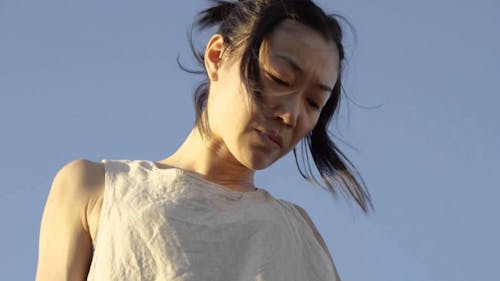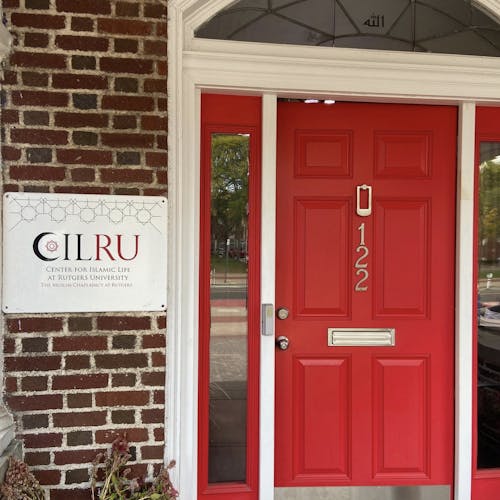Chancellor's colloquium blends performance art with the trials and tribulations of everyday life

Aki Sasamoto is an assistant professor of sculpture at Mason Gross School of the Arts by day and a practicing performance artist by night. On Monday, she addressed a crowd on the second floor of the Livingston Student Center as part of the Chancellor’s Colloquium series.
The talk — officiated as the “Amoeba Artist” — discussed her work as an artist and the list of unlikely collaborations she has been a part of, including with engineers, mathematicians and musicians. The event brought students from Mason Gross School of the Arts, but also faculty, including University Chancellor Debasish Dutta.
Sasamoto, born in 1980 in Kanagawa, Japan, had a recent performance at The Kitchen — an art and performance space in New York’s Chelsea neighborhood — where she tackled the idea of “yield points” — an engineering term that determines the point where stress placed on an object begins to deform it. It was a metaphor that was used to explain her own personal test of juggling her dynamic life, she said.
The project brought her from working with an engineer, using a mechanical stress test machine at the University, to touring a dumpster warehouse in Queens. In its final stage, Sasamoto performed alongside a saxophonist and a singer-songwriter. During the finale, she jumped on a trampoline positioned within a dumpster while performing an oral narrative.
For Sasamoto, collaborating with other artists — which are never in the same discipline as her — allows her to learn the structure of different languages.
“It’s a parallel,” she said of the distinct but similar roles that artists play in different disciplines.
Another popular exhibit that Sasamoto explained was part of the colloquium is her "Delicate Cycle" exhibit shown at the SculptureCenter in Long Island City in New York.
The exhibit also traveled to Shanghai and Tokyo in different forms. The main performance involved Sasamoto turning upside down on her hands and pushing a 5-foot-tall sheet-ball made of white laundry sheets through a tunnel with only her feet. It was inspired by a novel prize story written about dung beetles that she read when she was younger.
Sasamoto said she was fascinated by dung beetles. The book involved extreme details about the dung beetles' activities that included rolling massive balls of dung approximately 250 times heavier than their weight, which served as homes and sources of food for the beetles.
During the performance, she casually talked about dirt, stains and the human nature of cleaning.
Sasamoto regularly took breaks from rolling the giant sheet-ball to wash laundry sheets she had laid out in a separate room. At a point, she even put her whole body inside one of the washing machines.
“I use the subject ‘I’ so I am a stand-in for anyone that comes and unpacks the piece personally in their head,” Sasamoto said about her live performances that usually tell a narrative.
Dutta said he hoped more students and faculty would attend upcoming colloquiums because it exposes the University community to different disciplines that could lead to collaboration like Sasamoto has done through her artwork.
“Interdisciplinary work is a contact sport. If you don’t meet people who challenge your way of thinking or think differently, you will not be creative,” Dutta said.
Nabila Dadabhoy, a graduate student in Mason Gross School of the Arts, said she saw a parallel from Sasamoto’s project in her own academic life when a path she took to get an engineering degree changed course. After graduation, she found herself studying at Mason Gross School of the Arts.
Sasamoto’s talk inspired her because of its interdisciplinary nature, but also because she understood that different disciplines require different thinking or a “different course of pattern.” Where an engineering education prepared her with a trial-and-error mindset, the arts shaped her with a less-linear mindset, she said.
For Shy Yi, a senior program administrator at Student Support Services, Sasamoto’s project shows a progression in thinking and understanding of an idea, which is why she believes more students should attend interdisciplinary events like Sasamoto’s.
“… We’re so used to where we do one thing, and it doesn’t work out then it’s a failure, but no, it’s not a fail, it’s a success, because it helps you prepare for your next stage of thinking,” Yi said.



